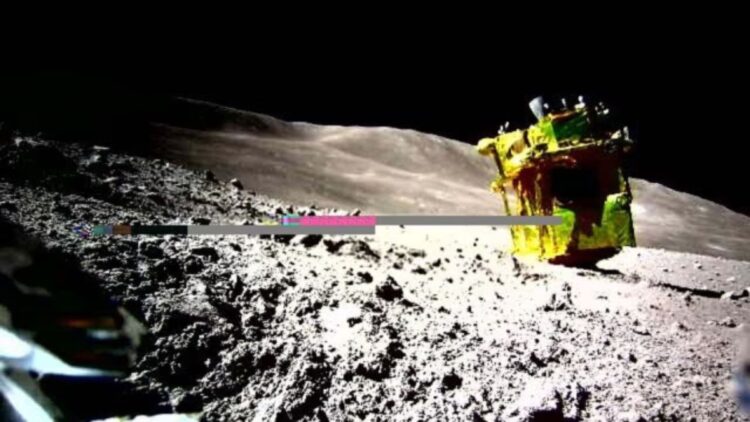Japanese Lunar probe endures its second lunar night, as reported by the Space Agency
In the bustling city of Tokyo, Japan’s unmanned lunar lander has emerged from its slumber after braving its second frigid lunar night, transmitting fresh images back to Earth, as disclosed by the nation’s esteemed space agency on Thursday. “We received a signal from SLIM last night, affirming that SLIM had triumphantly navigated through its second nocturnal sojourn,” articulated the Japan Aerospace Exploration Agency (JAXA) in a communiqué posted on the official X account for its Smart Lander for Investigating Moon (SLIM) mission.

“Benefitting from the lofty position of the sun and the lingering warmth within its apparatus, we were able to capture glimpses of the familiar lunar expanse using the navigational camera, among other tasks, albeit for a fleeting duration,” expounded the agency. A monochromatic depiction of the rugged terrain of a crater accompanied the communication. SLIM’s touchdown in January occurred at an unconventional angle, resulting in the misalignment of its solar panels. Approximately three hours post-landing, marking Japan as the fifth nation to achieve this milestone, JAXA opted to power down SLIM, reserving 12 percent battery capacity for potential reactivation at a later juncture.
Following a shift in the sun’s orientation, the probe briefly reactivated in late January, conducting scientific observations of a crater utilising a high-fidelity camera. However, the lunar nights, spanning a fortnight with temperatures plunging to minus 133 degrees Celsius, presented a formidable obstacle as the spacecraft was not originally engineered to endure such extreme conditions.
Therefore, JAXA scientists rejoiced when SLIM successfully rekindled in late February following its inaugural lunar night. JAXA has affectionately christened SLIM the “Moon Sniper” owing to its precision landing technology. The mission’s primary objective is to probe a segment of the moon’s mantle, an ordinarily inaccessible stratum beneath the lunar surface. This update follows reports that Odysseus, an uncrewed American lander and the premier private spacecraft to alight on the Moon, failed to reactivate despite prognostications indicating ample sunlight for its solar panels to energize its communication apparatus, as divulged by its manufacturer last Saturday.







